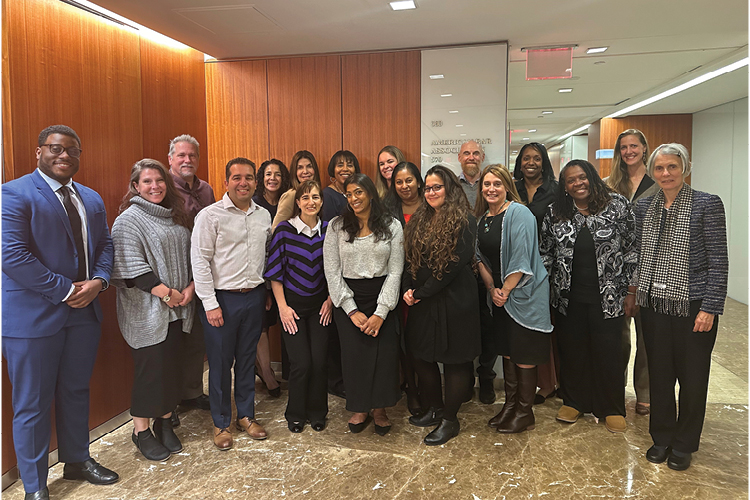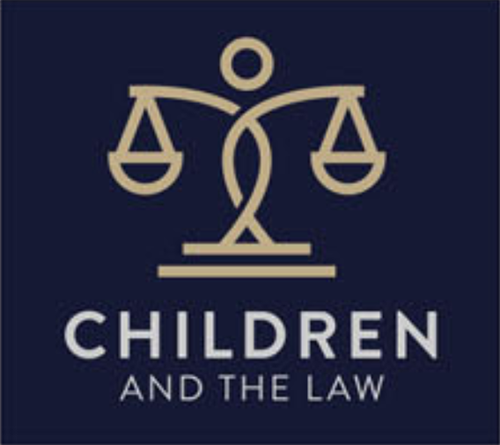Protection Services: Meet the lawyers and staff behind the ABA's work in children's law

Photo of ABA Commission on Youth at Risk courtesy of the Center on Children and the Law
The ABA Center on Children and the Law opened in 1978 to help attorneys handling child protection cases.
The Child Abuse Prevention and Treatment Act—the first significant federal legislation addressing child abuse and neglect—had been enacted four years earlier and called for children to have representation in court.
The center’s founding director, Howard Davidson, and associate director Robert Horowitz were its first staff members, providing technical assistance and resources to attorneys through a grant from the federal government and funds from the ABA Young Lawyers Division.
Fast forward nearly 45 years, and the Center on Children and the Law has evolved into a midsize nonprofit with nearly 20 staff members who promote access to justice for children and families, says Prudence Beidler Carr, who has been the center’s director since Davidson retired in 2016. The center now helps manage as many as 30 grant projects each year that focus on diverse areas of children’s law, including legal representation; foster care and education; kin and relative caregivers; child, adolescent and parental health; youth engagement; and state and court initiatives. They are supported by the U.S. Department of Health and Human Services and other federal agencies, state agencies and courts, philanthropic partners and the ABA.
Beidler Carr adds that the center works within an association of legal professionals and plays two key roles as part of that structure.
 The ABA Journal will be exploring children’s law and juvenile justice in our new series, Children & the Law.
The ABA Journal will be exploring children’s law and juvenile justice in our new series, Children & the Law.“First, within the larger child welfare field, the center reminds everyone that child welfare is both a social services space and a legal system,” she says. “As a legal system, government action in this space comes with tremendous power to affect children’s and parents’ most important rights and relationships.
“Second, as a part of the ABA, we have an important opportunity to raise up child welfare law as an extremely significant practice area for attorneys, judges and other legal professionals.”
Growing and evolving
Beidler Carr began working with children and parents involved in child welfare when she was in college in the 1990s.
Before joining the ABA, she served as deputy managing counsel at the U.S. Department of Homeland Security’s Office of the General Counsel in Washington, D.C. She then moved with her family to Mexico City, where her husband worked at the U.S. Embassy and she became involved with Juconi, an organization that supports children who live on the streets.
She shares these experiences—in particular, her exposure to how the government is supposed to work—with the Center on Children and the Law.
“There are so many elements of constitutional law in the child welfare space that aren’t always taken seriously, and it affects so many families,” Beidler Carr says. “One in three children in our country experiences a child welfare investigation into their families. Those investigations involve constitutional protections under the First, Fourth and 14th amendments.
“Being able to come back into this space and say, ‘These are constitutional protections that in any other context would be treated as such, and we need to make sure these protections exist,’ has been really helpful.”
In just the past six years, Beidler Carr and the center’s staff increased their total grant budget by about 165%. Several of their new projects focus on issues involving racism in child welfare. In one that is funded through the W.K. Kellogg Foundation, they are working to address race-based overreporting of Black and Indigenous families by health care professionals to child welfare.
They received a multiyear grant award to focus on racial disparity reduction in out-of-home placements for children in Hennepin County, Minnesota, where George Floyd was murdered in 2020. Beidler Carr says county data shows that children under 12 who have been separated from their parents and placed in foster care for at least a year are overwhelmingly Black, Indigenous or from other racial minorities.
The center also recently assisted the ABA Commission on Youth at Risk in drafting a resolution that urges bar associations to educate legal professionals about anti-Black systemic racism in the child welfare system.
According to Resolution 606, which the House of Delegates approved in August, this stems from the country’s history of slavery and has been sustained by “oversurveillance of and underinvestment in Black families in America, which is pervasive, ongoing and a root cause of the disproportionate involvement of Black parents and children within the system.”
“We have been in conversations about how to really, what I call, ‘give it legs,’” says Ernestine Gray, the immediate past commission chair and a retired judge of the Orleans Parish Juvenile Court in New Orleans. “We started the resolution coming out of the George Floyd murder case, and my position was I didn’t just want to pass something that says, ‘We’re horrified by this,’ and then it goes away.
“We took our time to figure out what was the best thing to say and how to say it. We are now talking about what we can do to make sure, No. 1, everyone knows about it; and No. 2, help jurisdictions figure out what to do with it moving forward.”
From perspective to policy
The ABA established the Commission on Youth at Risk in 2006 to focus on the legal needs of youths who are 13 to 19 years old. Twelve years later, the commission became a part of the Center on Children and the Law, where the responsibilities of its 16 commission members and 12 advisory committee members include helping set the ABA’s national policy agenda on child and youth law.
The commission also has proposed Resolution 613, a measure urging legislatures and courts to enact and enforce laws that establish a presumption of the child’s presence during all dependency proceedings; and Resolution 115, which recognizes that child welfare, immigration and juvenile justice systems cannot be reformed without the active participation of individuals who experienced those systems. The House of Delegates approved these resolutions in February 2022 and August 2020, respectively.
“I see our role as putting forth these resolutions to push the importance of children’s needs, their rights, to the forefront and making sure that everybody around them who is in their world—the judge, the attorney, bar associations—that all these people get some education about these areas,” says Brenda Robinson, the current chair of the commission.
“When you think about how much the ABA is looked to as the guiding light, it’s important what we put out and what we do,” adds Robinson, a senior attorney with the Children’s Law Center of California in Los Angeles.
Several commission members, including Dafna Gozani, a senior policy attorney at the National Center for Youth Law in Oakland, California, bring their own experiences in the juvenile justice or foster care systems to their work.
Gozani describes this as a rare opportunity, since few spaces in the legal field embrace the voices of directly impacted individuals.
“It’s not something I would wish on anybody, but considering it is a trauma I carry and it is an experience I live with every day, the opportunity to try to improve the circumstances for other individuals who are going through that, to me, is part of the obligation and privilege of being able to make it out of the system,” Gozani says.
Elevating the practice
In Beidler Carr’s experience, child welfare is one of the most complex legal areas. Unlike most cases, which have a plaintiff and a defendant, child welfare cases could have three or four parties. The Center on Children and the Law works closely with counsel for children, parents, tribes and government agencies, providing them with training and technical assistance.
“High-quality legal representation is critical for each party to make sure the system is operating in a way that is legitimate and fair and also that facilitates the outcomes we are all supposed to be working toward under the law, includ- ing family reunification, kin placement priorities, educational stability and children’s safety and well-being,” Beidler Carr says.
The center hosts national conferences for practitioners and shares information about best practices and successful models.
Sandy Santana, the executive director of New York City-based Children’s Rights, says he joined the Commission on Youth at Risk after recognizing an opportunity to leverage the prestige and reach of the ABA to help more children.
“It brings people of diverse personal and professional backgrounds together to tackle some of the most difficult issues that affect kids and to suggest real policy reforms that can make a difference over time,” Santana says. “It’s also an opportunity to meet people who are involved in a range of jurisdictions throughout the country and has allowed us to really curate learnings.”
Gray, who now chairs the Judicial Division, hopes to strengthen its relationship with the center because she considers its work critical to both judges and attorneys.
“They have the staff, and they have the expertise around a myriad of issues, which they have the ability to study and then push out recommendations for the field,” Gray says. “I’m pleased they have been able to keep going all these years. … They have proven both to federal agencies and state agencies that they can provide quality work and support for jurisdictions that are interested in improving their systems.”
The ABA Journal will be exploring children's law and juvenile justice in our new series, Children & the Law.
Write a letter to the editor, share a story tip or update, or report an error.


